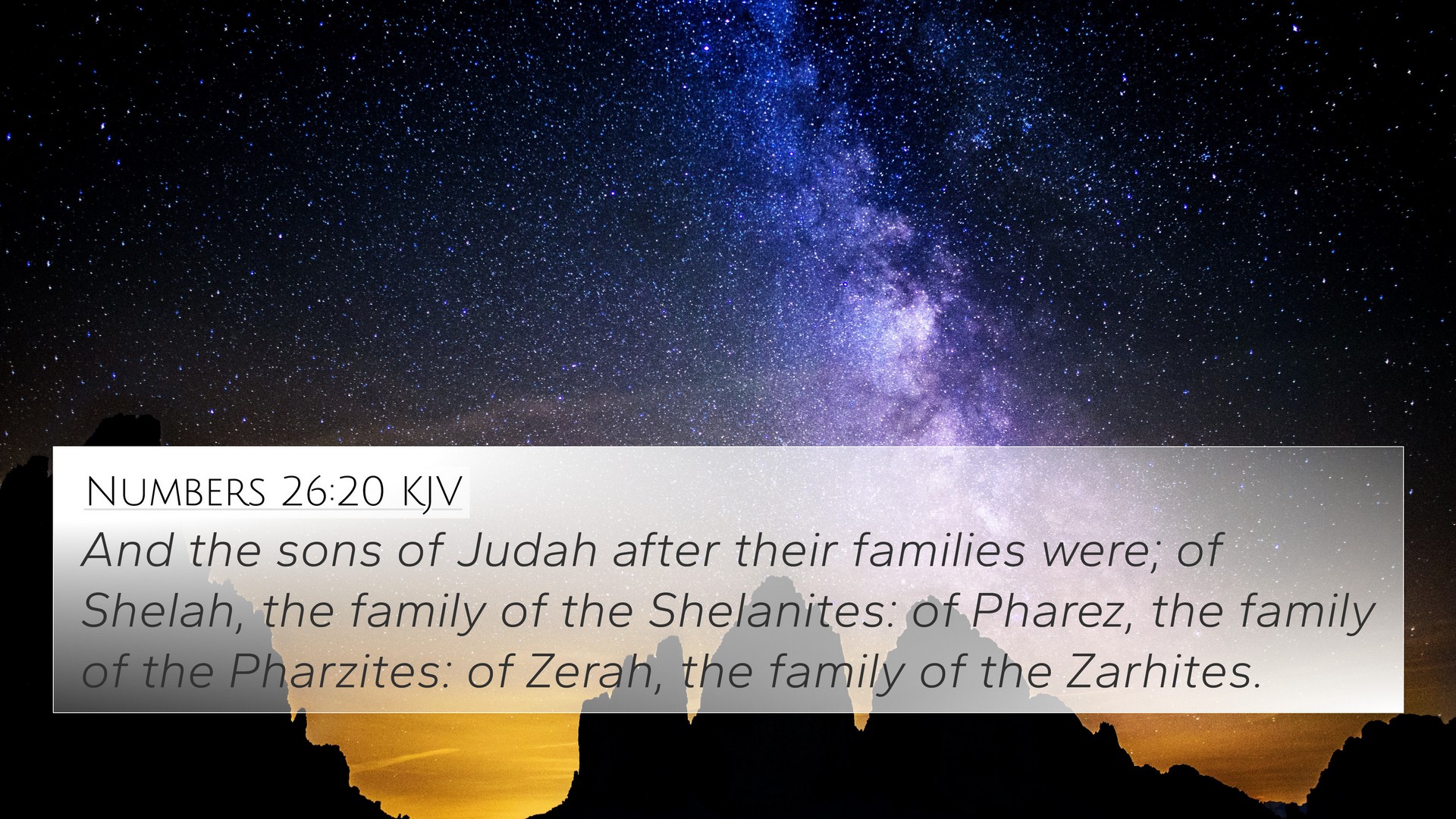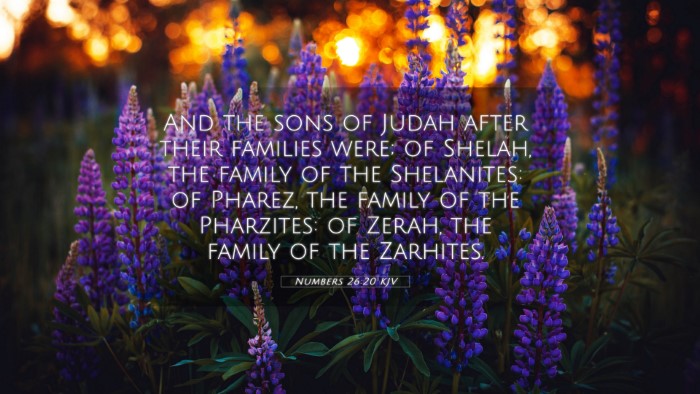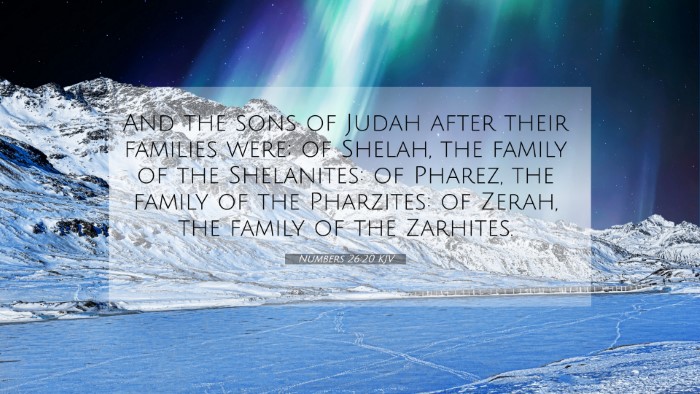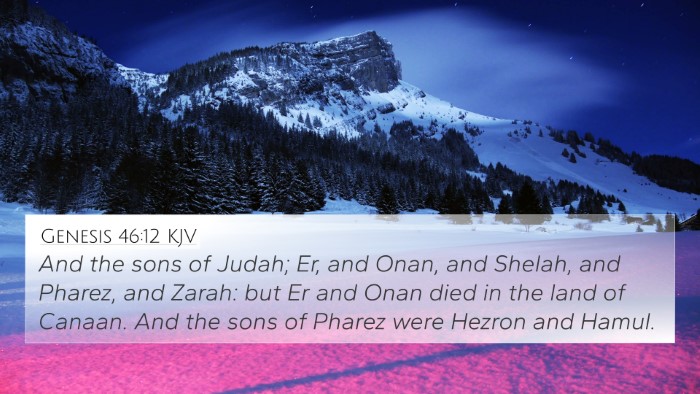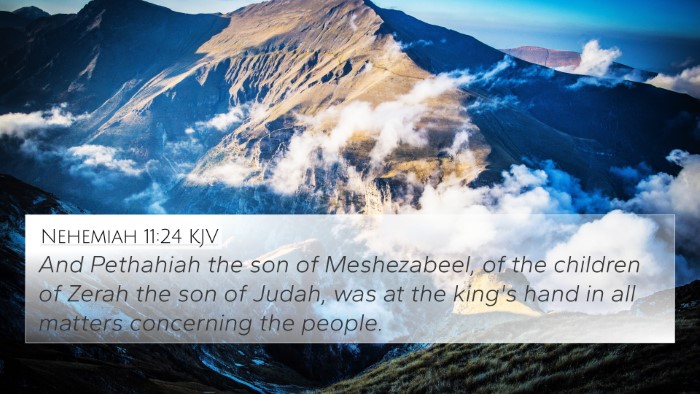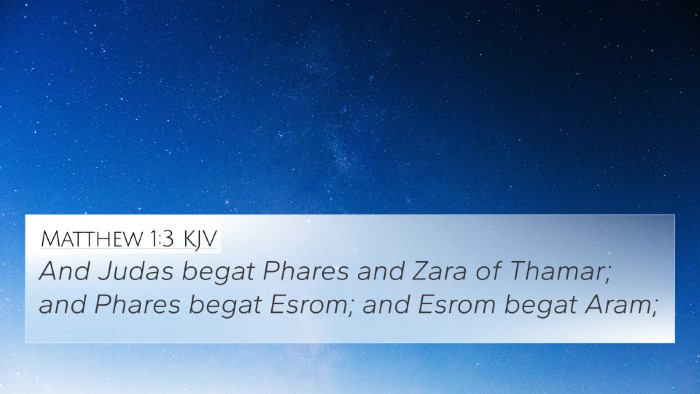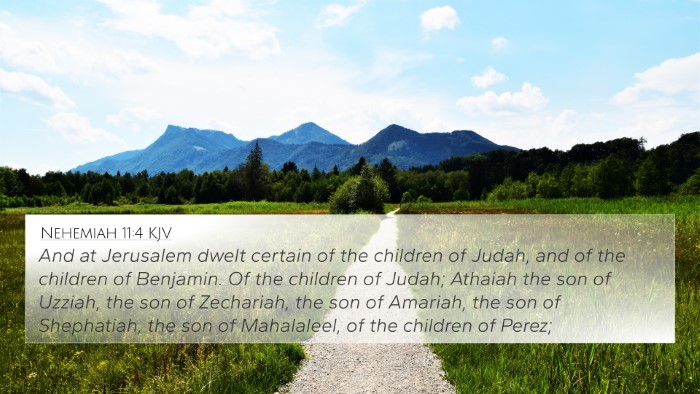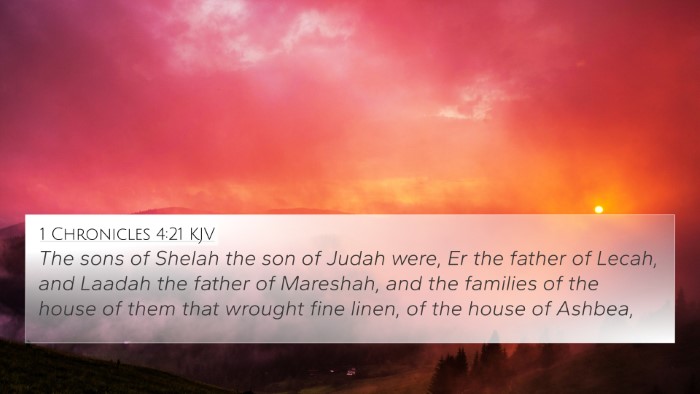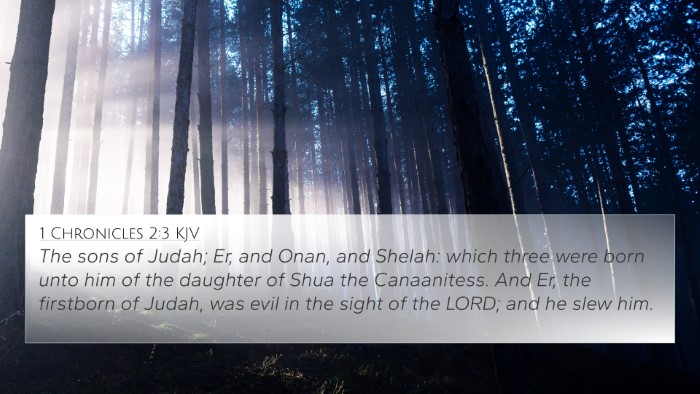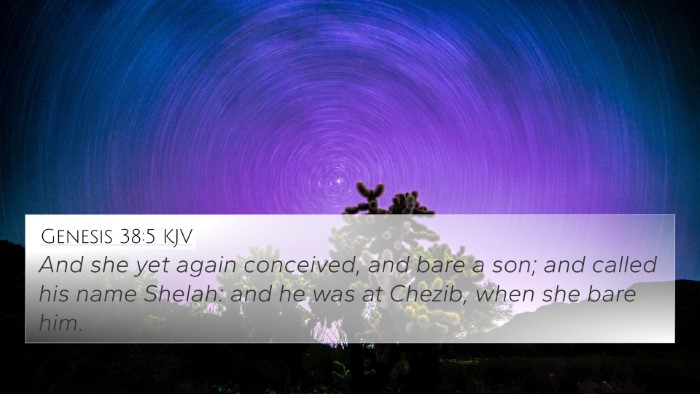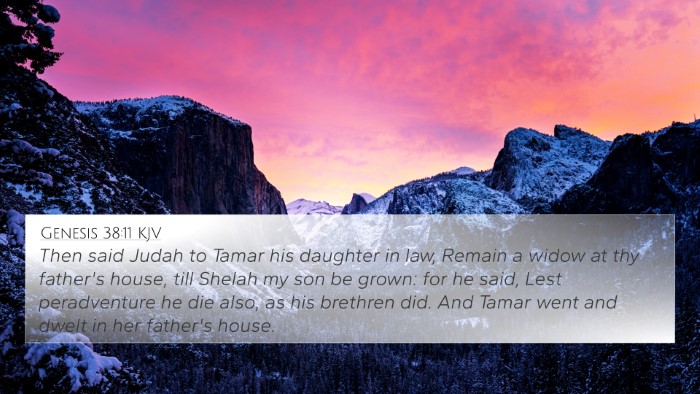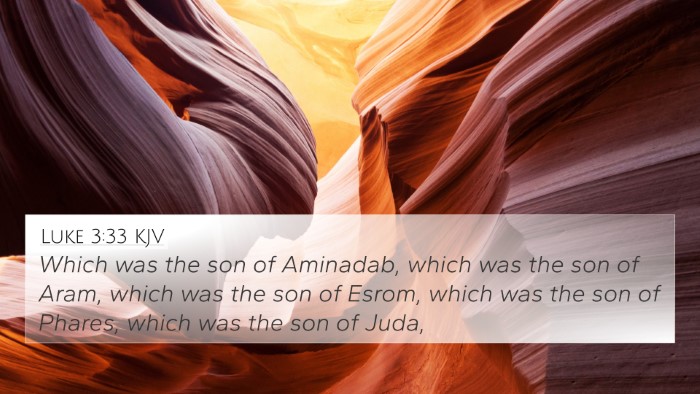Understanding Numbers 26:20
Verse: Numbers 26:20 states, "And the sons of Judah after their families were: of Shelah, the family of the Shelahites: of Pharez, the family of the Pharezites: of Zerah, the family of the Zerahites." This verse records the lineage of the tribe of Judah, highlighting the various family groups that emerged from Judah's lineage.
Meaning and Insights
This verse is significant within the context of the broader narrative of the Israelite census conducted in the wilderness, which serves various purposes such as establishing tribal identities and preparing for the Promised Land. According to public domain commentaries, including those by Matthew Henry, Albert Barnes, and Adam Clarke, we can derive several key insights.
- Importance of Lineage: The mention of family names underscores the importance of lineage and heritage in the Israelite community. Each family had specific roles and responsibilities, contributing to the social and religious fabric of the nation (Matthew Henry).
- Fulfillment of Promises: This detailing illustrates God’s faithfulness in preserving the descendants of Jacob, aligning with earlier promises made to Abraham regarding the multiplication of his seed (Adam Clarke).
- Cultural Identity: The breakdown of tribes and families enables the Israelites to understand their identity as God’s chosen people and establishes their unique relationship with Him (Albert Barnes).
- Preparation for Conquest: The census serves as preparation for entering the Promised Land, ensuring that the tribes are organized and ready for the challenges ahead (Matthew Henry).
Thematic Bible Verse Connections
This verse can be cross-referenced with other biblical texts to deepen our understanding of its implications:
- Genesis 49:10: Prophecy about Judah's enduring leadership and significance among the tribes.
- 1 Chronicles 2:3-4: Expanded genealogy of Judah, providing additional context about its family structure.
- Revelation 5:5: Symbolism of the Lion of the tribe of Judah, fulfilling the spiritual lineage of the tribe in New Testament theology.
- Luke 3:33: Genealogy of Jesus Christ, linking back to Judah, thus connecting the Old Testament lineage to the New Testament narrative.
- Hebrews 7:14: Discussion of Jesus arising from the tribe of Judah, reinforcing the significance of this tribe in the salvific plan of God.
- Joshua 14:6-12: Account of Caleb from the tribe of Judah, who exemplifies faith and the inheritance given to this tribe.
- Matthew 1:2-3: Closure where the genealogy of Jesus Christ emphasizes the lineage from Judah through David.
Comparative Bible Verse Analysis
To further understand Numbers 26:20, we can analyze it comparatively with other verses that reveal similar themes of lineage and familial structure:
- Exodus 6:16-20: The genealogies of Moses and Aaron, highlighting the importance of family trees in God's plan.
- Ezra 2:1-70: A return from exile clarifies and reinstates tribal identities and responsibilities.
Tools for Bible Cross-Referencing
For those studying these connections, utilizing tools for Bible cross-referencing can enhance understanding. Resources such as a Bible concordance, Bible cross-reference guide, and cross-reference study methods are invaluable for exploring connections:
- Identifying Connections: Use a concordance to find verses containing similar keywords or themes.
- Comparative Studies: Look for parallel narratives or genealogies in the Old and New Testament for a comprehensive understanding.
- Topical References: Gather verses under specific themes, such as lineage or covenant, to see how they intersect throughout Scripture.
Conclusion
In conclusion, Numbers 26:20 serves not just as a record of lineage but as a piece of the larger puzzle of God’s covenant and purpose for Israel. By examining this verse alongside other biblical passages, we highlight the relationships between different parts of the Bible, enriching our understanding of God’s word through cross-referencing and thematic study. Thus, using these methods of biblical study not only clarifies meanings but also reinforces the integrity and unifying message of Scripture.
Final Thoughts
For anyone looking to enhance their understanding of biblical texts, this careful study approach can reveal new insights into familiar verses. Embrace the rich tapestry of Scripture where each verse, like Numbers 26:20, is interconnected with profound significance.
